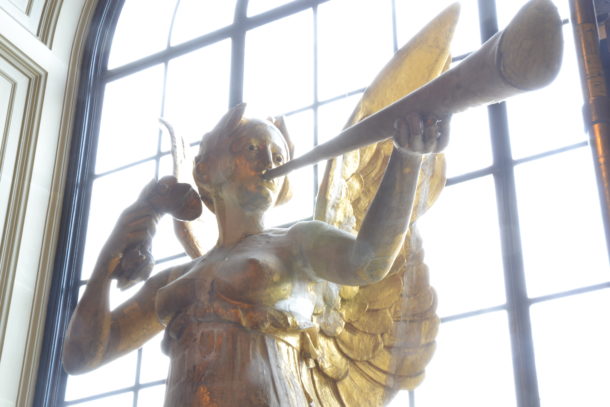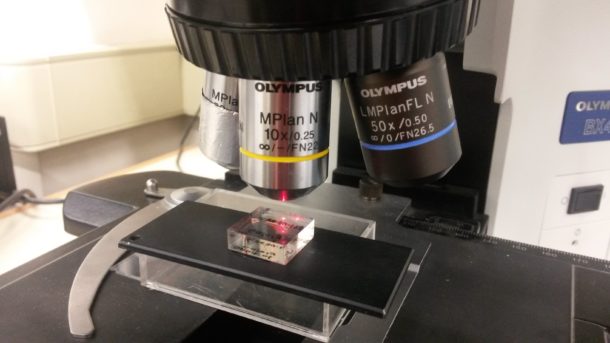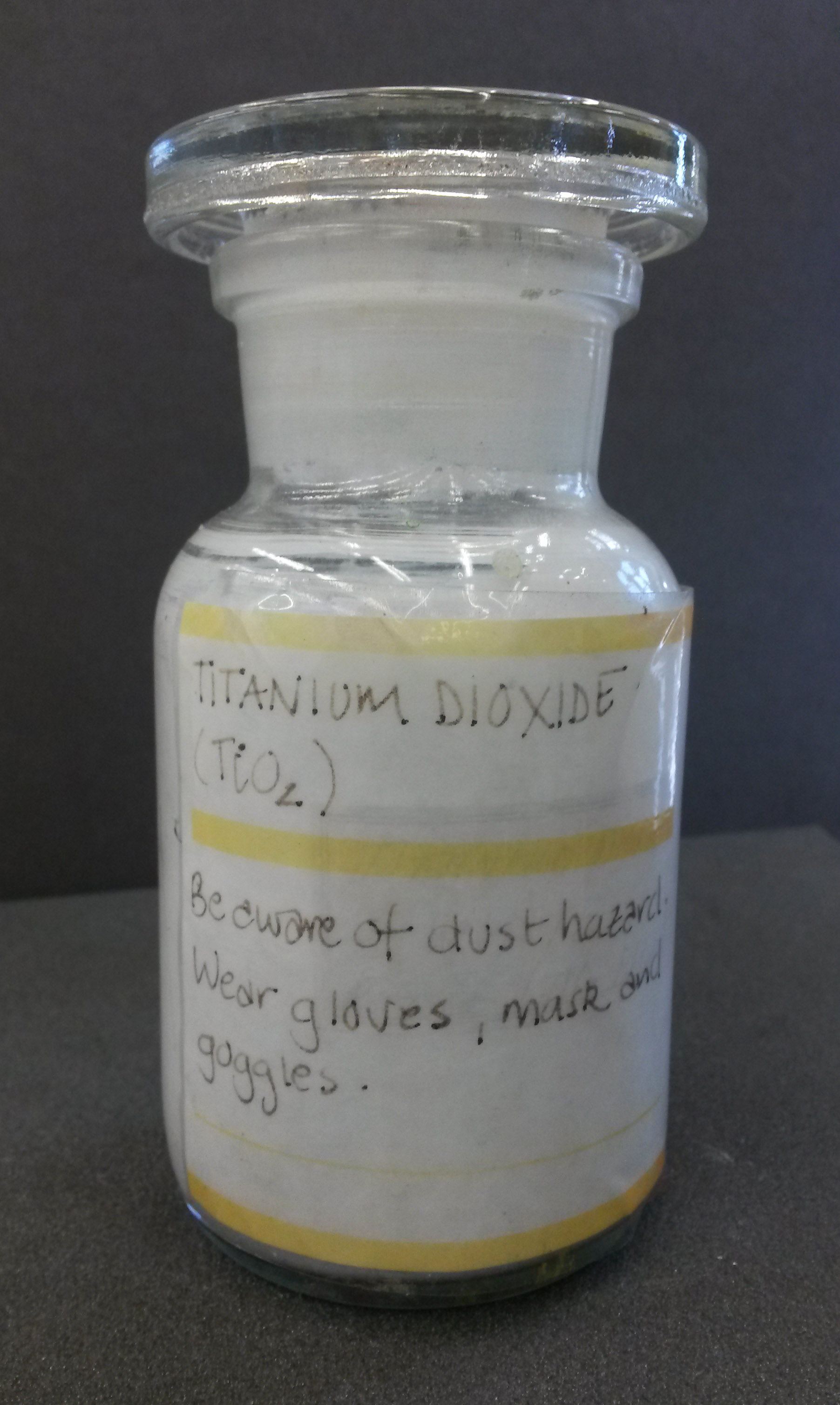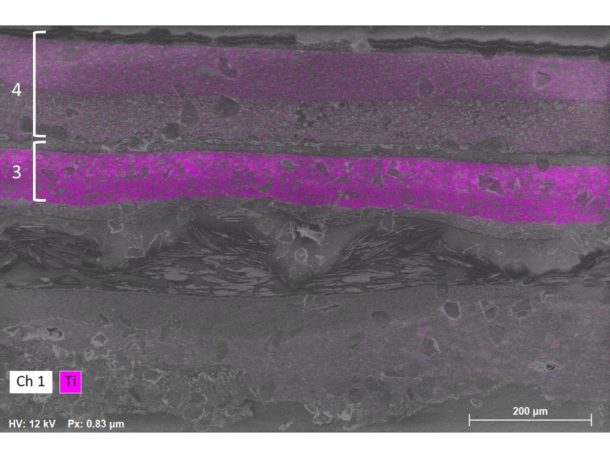This series of blog entries is about the scientific examination of the gold finish of the Spirit of Gaiety, the angel which once graced the dome of the Gaiety Theatre in London.
Raman analysis
Over the past few weeks I have been looking at the thick golden paint the covers the Spirit of Gaiety (Figure 1). I first found out that the Angel, as we call this very large statue, was painted gold or silver at different stages of its life.

Ideally we would like to date the metal paint schemes, and figure out when the Angel changed its appearance and went from golden to silvery, for example. We cannot date the actual metal finishes, but we may be able to date some of the other paint layers by finding out what pigments are present.
In the V&A Science Section we have a Raman microscope (see Figure 2), which we use to identify pigments through their Raman spectrum, a sort of very characteristic fingerprint.

We combined the information from our Raman experiments with the SEM-EDX results obtained recently at the Natural History Museum and this is what we concluded:
Scheme 1 (earliest, golden): Every pigment identified in this scheme was used frequently from the mid-19th century onward. The materials identified in this scheme include red lead, lead white, zinc yellow (zinc chromate), barite (probably as a component of lithopone) and clay.
This could well be the original scheme applied in 1904.
Scheme 2 (silvery): No pigments are present in the second scheme, only an aluminium paint layer.

Scheme 3 (silvery): This scheme contains a large amount of the white pigment anatase, a form of titanium dioxide (Figures 3 and 4). This puts this scheme firmly in the 1920s or later, as this type of material was synthesised and used as a pigment from the early 1920s onward.
Scheme 4 (golden): The latest scheme too contains titanium dioxide among other pigments.

These findings allowed us to narrow down when some of the schemes may have been applied.
Next time Head Furniture Conservator Zoe Allen will describe the conservation of the Angel.


